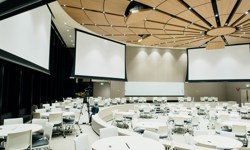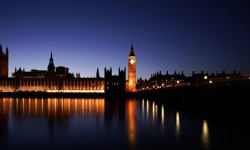
The report The Crisis in Creative Effectiveness covers almost 600 case studies from 1996 to 2018 and is a follow-up to the IPA’s 2016 publication Selling Creativity Short that warned of the dangers to creative effectiveness posed by short-termism in marketing and highlighted a misunderstanding of how brands grow.
According to effectiveness expert and report author Peter Field, creatively awarded campaigns are now less effective than they have been in 24 years of data analysis and are now no more effective than non-awarded campaigns.
The Report also reveals the continuing decline in the efficiency of creatively awarded campaigns. Over the pre-crisis period 1996-2008 creatively awarded campaigns were around 12 times as efficient as non-awarded ones, but over the period from 2006-2018, as the crisis developed, this fell to below four times as efficient. It continues to fall and creativity is almost certainly delivering no overall efficiency advantage today.
This situation is something the report argues is entirely avoidable if the lessons of best practice in creativity are learned.
Key report findings:
- Short-termism drives collapse in creative effectiveness and efficiency
- The collapse in effectiveness and efficiency can be explained largely by the shift to short-term activation-focussed creativity and the strategic and media trends this has promoted.
- Creativity was once the single most important driver of effectiveness, with enormous effectiveness multipliers evident for the most creative campaigns. However, creativity delivers very little of its full potential over short time frames, and yet the trend to short-term, disposable and ultimately inefficient creativity continues.
- This general trend in marketing culture has been reinforced and exacerbated by creative judges increasingly awarding campaigns that pursue short-term goals. This has encouraged and rewarded a short-term mind-set, even though a short-term focus means those campaigns will inevitably under-perform in the long term.
- Lessons from creative best practice can reverse the damage
- Creative best practice is currently being overwhelmed by this poor practice, yet there are still campaigns showing how it should be done and delivering impressive effectiveness as a result (with exemplars including Guinness, Snickers and John Lewis).
- There is a huge gulf between creative best practice and poor practice. High performing creatively awarded campaigns are eight times more effective than their low performing peers in terms of the number of business effects they generate and almost 16 times more likely to bring major profitability growth.
- These high performers are defined by:
- The industry urgently needs to change the way it identifies and rewards creativity
- The report argues that anyone who values creativity should stop encouraging the development of disposable creative ideas and stop squandering the use of creative firepower for tactical initiatives. Instead, briefs should stress the importance of how ideas will strengthen the brand over time.
- Creative shows also have a role to play; with separate classes of awards recommended for short and long-term creativity, to incentivise a rebalancing of creative endeavour in favour of long-term results.
* A more balanced approach to short and long-term objectives.
* The maintenance of the campaign in market long enough to embed behavioural change: at least six months typically.
* Broader, earlier targeting of consumers rather than data-driven real time communications linked to purchase intent.
* Greater use of broad reach, brand building media, especially TV but also online video and OOH.
* A balanced allocation of media expenditure between brand building and sales activation in line with latest best practice guidelines.
Says Peter Field: “Despite our warnings, the misuse of creativity has continued to grow and the effectiveness advantage has continued to decline. This report is a final wake-up call for good sense, before it is too late. I urge everyone who values creativity as I do, to study this report and act on it, especially those with the power to change how creativity is commissioned, deployed and judged. We cannot afford to go on being complacent; left unchecked, the catastrophic decline in creative effectiveness will ultimately weaken support for creativity amongst general management. Money spent on creativity will become ‘non-working’ budget and will be cut.”
Says Janet Hull OBE, Director of Marketing Strategy, IPA: “It is timely that this latest iteration of our IPA Databank series on the topic of Creativity and Effectiveness is being launched at the Cannes Festival of Creativity, as the messages it delivers have wide relevance not just to advertising strategists and planners but also to brand owners, creative departments, creative award winners, juries and organisers. In essence, as Peter Field demonstrates so convincingly, the correlation between creativity and effectiveness, and between creativity and efficiency is weakening. This is not because the rules of creativity for brand building have changed, but rather that they are not being applied in the right measure, through the right channels, at the right time. Just as in the wider marketing planning process, creativity is becoming a victim of short-termism. Peter’s rallying cry to the industry should not be overlooked.”












